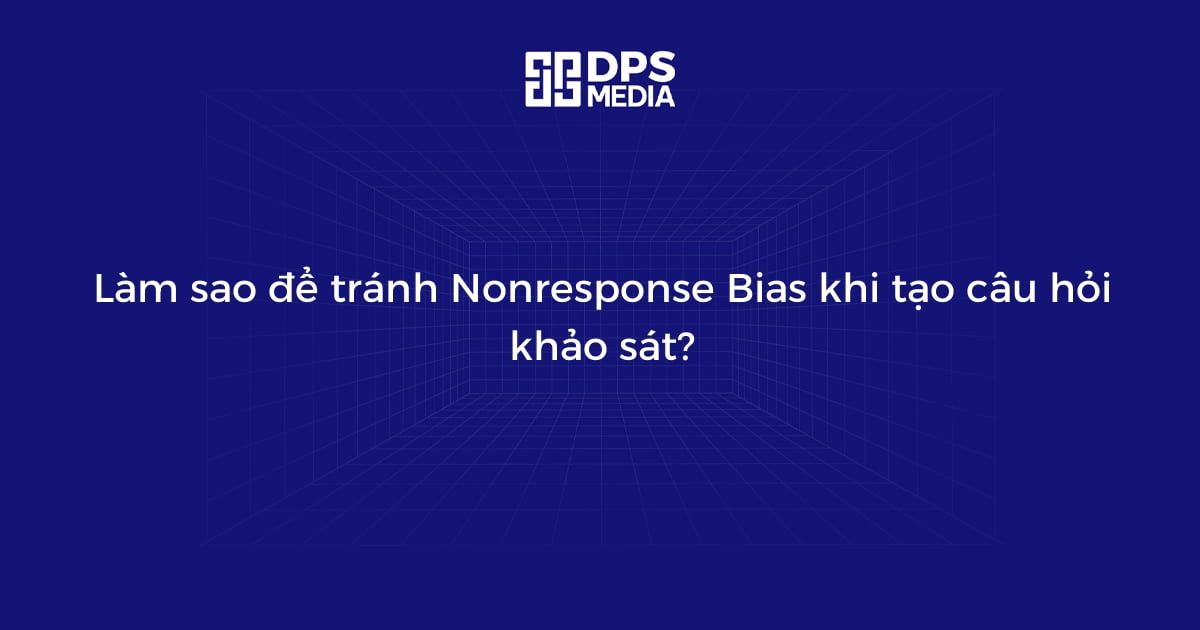What is Nonresponse Bias?
Nonresponse Bias, also known as non-response error, is a concept used in the field of social research to indicate the deviation in research results due to not having enough samples participating in the research. This is an important issue that researchers and organizations face when conducting surveys or social research.
The difference between Response Bias and Nonresponse Bias
Response Bias and Nonresponse Bias are two concepts related to errors in surveys. Response Bias is the error due to inaccurate or biased responses from survey participants. Meanwhile, Nonresponse Bias is the error due to insufficient survey participants, leading to inaccurate representation of the sample.
Common causes of Nonresponse Bias
1. Poor survey design
A poor survey design can make participants feel unappealing or uninterested in participating in the survey. Unclear or overly complex questions can also cause participants to lose interest in participating.
2. Inaccurate targeting
Targeting the right survey participants plays an important role in ensuring the representativeness of the sample. If not targeting the right users or customers, it will lead to nonresponse bias errors.
3. Refusal to participate
One of the causes of nonresponse bias is due to some people refusing to participate in the survey. This could be because they don't have time or are not interested in the issue being surveyed.
4. Failed survey delivery
If the survey delivery process is not carried out effectively, such as through error emails or not reaching all expected participants, it can lead to errors in data collection.
5. Unintentional omission
There may be situations where some people selected to participate in the survey are unintentionally omitted, through an inaccurate selection process or during the survey sending process.
Examples of Nonresponse Bias
1. Outdated customer information
In cases where customer information is outdated or no longer accurate, survey calls or emails may not reach the actual participants, leading to nonresponse bias.
2. Request for sensitive information
When the survey requests sensitive information, such as income or monthly expenses, some people may not want to disclose this information and refuse to participate in the survey, causing nonresponse bias.
3. Forgetting the survey
There are cases where participants have been selected to participate in the survey, but they unintentionally forget or skip the survey when reminded, causing nonresponse bias.
4. Using inappropriate channels
If using inappropriate channels to conduct the survey, for example, sending survey emails to people who don't use email regularly, it will lead to nonresponse bias.
5. Focusing on the wrong audience
When focusing on a group of subjects that is not representative of all users or customers, this can lead to nonresponse bias. For example, a survey focusing only on users over 30 years old will not present a complete picture of the opinions of users under 30 years old.
How to reduce Nonresponse Bias
1. Consider trigger and timing of the survey
Reconsider the trigger and timing of the survey to ensure appropriateness and attract participants.
2. Optimize survey design
Ensure that the survey design is user-friendly, easy to understand, and engaging so that participants want to take the survey.
3. Review survey questions
Ensure that questions are phrased clearly and understandably, avoiding leading to biased responses or causing difficulty for participants.
4. Use existing customer data
Leverage existing customer data to ensure better representativeness of the sample.
5. Provide opt-out options
Allow survey participants to skip questions or sections they do not wish to answer, to increase autonomy and reduce nonresponse bias.
6. Reward survey participants
To encourage participation, provide incentives such as discount vouchers or small gifts after completing the survey.
7. Keep the survey length short
Ensure that the survey is not too long and does not take up too much of the participant's time. Being concise and direct is the most effective way to attract participation.
8. Ensure information confidentiality
Ensure that the information collected in the survey is kept confidential and not disclosed to anyone outside the research team.
9. Create the easiest path
Simplify the survey participation process and ensure that participants face minimal barriers in completing the survey.
10. Reach the right audience
Define clear objectives and ensure that the survey targets the right user or customer audience.
11. Don't rush
Do not impose too short a survey deadline, to ensure that participants have enough time to engage and answer questions carefully.
Nonresponse Bias and Your Survey
Nonresponse bias can significantly affect your survey results. By understanding and applying methods to mitigate this error, you can ensure the accuracy and representativeness of the survey sample, helping you make accurate and effective decisions based on the data collected from the survey.










